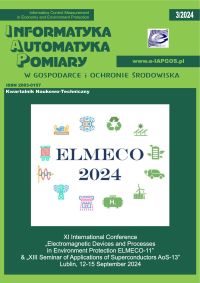TŁUMACZENIE MASZYNOWE Z KLASYFIKACJĄ POZIOMÓW JĘZYKA JAWAJSKIEGO
Andrew Nafalski
nafalski@unisa.edu.auUniversity of South Australia, School of Engineering, Australia (Australia)
Aji Prasetya Wibawa
Universitas Negeri Malang, Department of Electrical Engineering, Indonesia (Indonezja)
Abstrakt
Hybrydowy korpus maszynowy dla celów translacji został opracowany w celu uzyskania właściwego tłumaczenia poziomu języka jawajskiego. Rozwinięte tłumaczenie na bazie statystycznej wykazuje wyjątkowo dokładne wyniki. Integracja automatycznego klasyfikatora tekstu i systemu eksperckiego jest propozycja aby pomóc użytkownikom języka jawajskiego w klasyfikacji poziomów mowy wykorzystywanych dla konkretnego rozmówcy. Zaprojektowany system ekspertowy w powiązaniu z klasyfikatorem naive Bayes wykazuje przewagę nad prostym podejściem logiki prawdopodobieństwa.
W rezultacie średnia uzyskana dokładność tłumaczenia (72,3%) wskazuje, że zintegrowane inteligentne interfejsy mogą skutecznie rozwiązywać problemy pragmatycznego tłumaczenia języka jawajskiego.
Słowa kluczowe:
systemy ekspertowe, hybrydowe tłumaczenie maszynowe, korpus języka, poziomy języka jawajskiego, klasyfikator tekstuBibliografia
Ahrenberg L., Andersson M., Merkel M.: A simple hybrid aligner for generating lexical corespondences in parallel text. Proc. 36th Annual Meeting of the Association for Computational Linguistics Montreal, Quebec, Canada, 1998, 29–35.
Google Scholar
Arias-Aranda D., et al.: A fuzzy expert system for business management. Expert Systems with Applications 37 (12), 2010, 7570–7580.
Google Scholar
Bilbao V. M. D., Lopes J. G. P., Ildefonso T.: Measuring the impact of cognates in parallel text alignment. Proc. EPIA 2005, 338–343.
Google Scholar
Bond F., Ogura K.: Reference in Japanese-English Machine Translation. Machine Translation 13 (2/3), 1998, 107–134.
Google Scholar
Chen Y., et al.: Constructing a nutrition diagnosis expert system. Expert Systems with Applications 39 (2), 2012, 2132–2156.
Google Scholar
Hutchins J.: Example-based machine translation: a review and commentary. Machine Translation 19 (3), 2005, 197–211.
Google Scholar
Jian De W., Zhao Xiong C., He Yan H.: Intelligent Case Based Machine Translation System Computational Linguistics and Intelligent Text Processing, in A Gelbukh, Editor, Springer, Berlin/Heidelberg, 2001, 197–205.
Google Scholar
John K.: Expert systems and mass appraisal. Journal of Property Investment & Finance 29 (4/5), 2011, 529–550.
Google Scholar
Koutsantonis D., Panayiotopoulos J-c.: Expert system personalized knowledge retrieval. Operational Research 11 (2), 2011, 215–227.
Google Scholar
Le S., et al.: PECAT: a computer-aided translation tool based on bilingual corpora. Proc. Systems, Man, and Cybernetics, vol. 2, 2001, 927–932.
Google Scholar
Li J., Wang B.: The automatic extraction of translation patterns and matching algorithm in an English-Chinese machine translation. Proc. Natural Language Processing and Knowledge Engineering. Wuhan, 2005, 839–843.
Google Scholar
Liu X., Fang C., Xiao D.: Intrusion diagnosis and prediction with expert system. Security and Communication Networks 4 (12), 2011, 1483–1494.
Google Scholar
Lopez A.: Statistical machine translation. ACM Comput. Surv. 40 (3), 2008, 1–49.
Google Scholar
Mitchell T.M.: Machine Learning. McGraw-Hill, New York, 1997.
Google Scholar
Poedjosoedarmo G.: The effect of Bahasa Indonesia as a lingua franca on the Javanese system of speech levels and their functions. International Journal of the Sociology of Language 177 (1), 2006, 111–121.
Google Scholar
Poedjosoedarmo S.: Javanese Speech Levels. Indonesia (6), 1968, 54–81.
Google Scholar
Purwadi P., Mahmudi M., Setijaningrum E.: Javanese language structure. Media Abadi,Yogyakarta, 2005.
Google Scholar
Quinn G.: Teaching Javanese Respect Usage to Foreign Learners. Electronic Journal of Foreign Language Teaching 8, 2011, 362–370.
Google Scholar
Setiyanto A. B.: Parama Satra: Javanese Language. Panji Pustaka,Yogyakarta, 2010.
Google Scholar
Smith-Hefner N. J.: Language Shift, Gender, and Ideologies of Modernity in Central Java, Indonesia. Journal of Linguistic Anthropology 19 (1), 2009, 57–77.
Google Scholar
Somers H.: Review Article: Example-based Machine Translation. Machine Translation. 14 (2), 1999, 113–157.
Google Scholar
Subroto D. E., Rahardjo M. D., Setiawan B.: Endangered krama and krama Inggil varieties of the Javanese language. Linguistik Indonesia 26 (1), 2008, 89–96.
Google Scholar
Susilowati E., et al.: Practicing Javanese (Gladhen Basa Jawa) for Junior High School. CV Pustaka Grafika, Malang, 2010.
Google Scholar
Terashima R., Echizen-ya H., Araki K.: Learning method for extraction of partial correspondence from parallel corpus. Proc International Conference on Asian Language Processing. Singapore, 2009, 293–298.
Google Scholar
Van Hecke T.: Fuzzy Expert System to Characterize Students. PRIMUS 21 (7), 2011, 651–658.
Google Scholar
Way A., Gough N.: Comparing example-based and statistical machine translation. Natural Language Engineering 11 (3), 2005, 295–309.
Google Scholar
Wedhawati W., et al.: Struktur Nahasa Jawa Mutakhir. Kanisius, Yogyakarta, 2006.
Google Scholar
Wibawa A. P., et al.: Edit Distance Algorithm to Increase Storage Efficiency of Javanese Corpora. Proc International Conference on Computer, Electrical, and Systems Sciences, and Engineering. Singapore, 2012, 1056–1060.
Google Scholar
Wibawa A. P., et al.: Hybrid machine translation for Javanese speech levels. Proc. 5th International Conference on Knowledge and Smart Technology (KST). Burappa, Thailand, 2013.
Google Scholar
Wibawa S.: Efforts to maintain and develop Javanese language politeness. Proc. International Seminar of Javanese Language. Paramaribo, Suriname, 2005, 1–10.
Google Scholar
Yazdchi M. V., Faili H.: Generating English-Persian parallel corpus using an automatic anchor finding sentence aligner. Proc Natural Language Processing and Knowledge Engineering (NLP-KE), 2010, 1–6.
Google Scholar
Zhao J., Liu F., Liu D.: Two-phase base noun phrase alignment in Chinese-English parallel corpora. Proc. Natural Language Processing and Knowledge Engineering. Wuhan, 2005, 360–365.
Google Scholar
Autorzy
Andrew Nafalskinafalski@unisa.edu.au
University of South Australia, School of Engineering, Australia Australia
Autorzy
Aji Prasetya WibawaUniversitas Negeri Malang, Department of Electrical Engineering, Indonesia Indonezja
Statystyki
Abstract views: 311PDF downloads: 114
Licencja

Utwór dostępny jest na licencji Creative Commons Uznanie autorstwa – Na tych samych warunkach 4.0 Miedzynarodowe.








